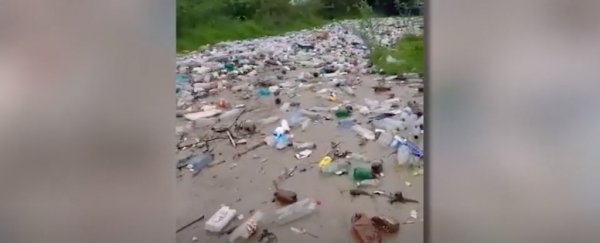Torrential rains that have brought flooding to regions across Romania are also highlighting the horrifying human impact on the planet. A video posted to Facebook shows a literal river of garbage surging downstream in the commune of Micești in Argeș County.
It's hard not to gasp in dismay at a frankly shocking amount of plastic waste pollution.
Admittedly, Romania has a very poor track record of waste management. In 2013, only 5 percent of all trash was recycled, compared to a European Union average of 28 percent. That means most of the country's waste ends up in landfills - some of them illegal.
The European Commission has criticised how the Romanian government manages waste, and even allocated funding for new waste disposal systems. It's slowly improving - that 2013 figure is up from just 1 percent in 2010, and both private and public sectors are making an ongoing effort to improve.
But Romania is one country. Globally, most plastic waste is still ending up discarded.
Even when we do try to recycle it - a difficult and expensive process - things don't always go according to plan.
The United States is currently in a 'trash crisis' due to a new policy implemented in China last year that saw an end to plastic recycling imports. This move has also affected the disposal of recyclable plastic in other countries around the world, including Canada and Australia.
According to a study published in 2017, researchers found that, by 2015, over 8.3 billion metric tons of plastic had been produced by humans since the 1950s. Over 6.3 billion of those tons had been discarded - ending up in landfill or the natural environment, including the oceans, where it's been devastating the wildlife.
Environmental scientists have warned that, if global trends continue the way they have, there could be over 13 billion tons of plastic waste in landfill, or polluting the natural environment, by as early as 2050.
This video is a sobering prediction of what that might look like when garbage really hits the fan.
